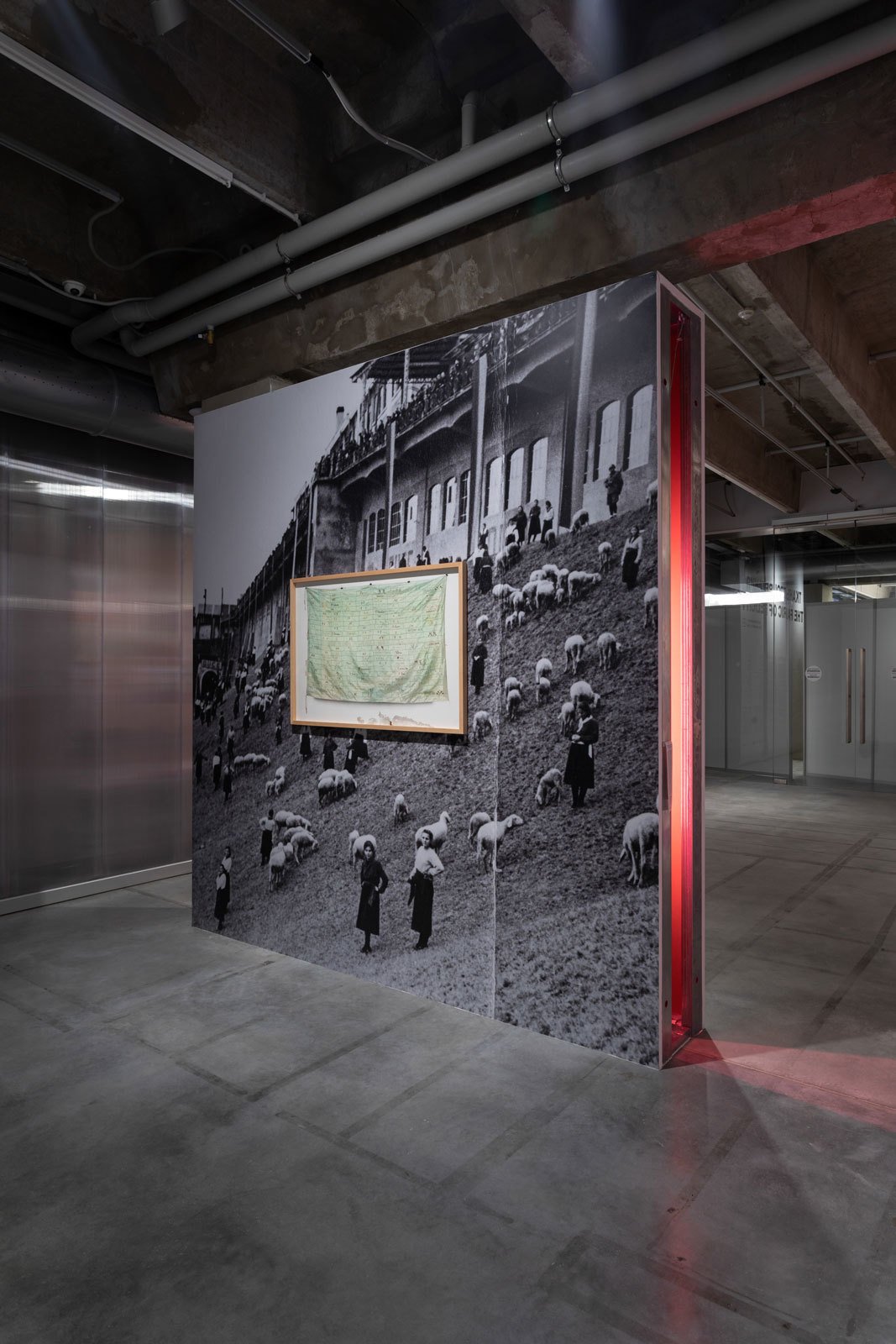Vladislav Shapovalov
(b. 1981, Rostov-on-Don; lives and works in Moscow and Milan)

Green Flag (Gemma, T.V., D.M., Cesarina, A.R., B.R., P.G., D.S., Rosanna, L.F., Luisa, V.R., F.G., Lucia, C.Mariuccia, P.S., S.A., M. Anna, N.B., Q.A, P. Iolanda, C.M., B.F., G.M., M.G., C.A., M. Norma, Olga Laura, L.L., M.G., R.L., P.E., L.G., M.V., C.I., Mirella Bertecco, P.A., C.G., Norina, A.M., C. Mariuccia, M.S., S.G., Coda Caselia Maria, P.L., Maria, E.G., I.T., M. P., I.P., A.A., M.L., Magda Salvetti, Lella Luigina, B.L., Albertina, A.R., Elsa, L.A., R.L., M.P., Giuse, V.G., L.A., P.G., I.L., O.I., C.O., M.Lucia, Lina, T.I., Sala Ines, B. Francesca, M. Dalia, F.G., C.G., A.R., Bottino Rita, Romentino R, M.C., R.S., G.R., R.T., DCI, N. L., F.R., G.P., M.N., C.P., D.Meri, V.F, ZAM, B.G., Eliana, B.M., Negro Angela, L.S., Vittoria Cantone, P.A., M.P., Mosca Rina, A. F., Lorenzon Teresina, Vilma, Loiodice Mari, N.M., F.O., Dolores, C.C., Maria Pozzo, B.R., Bosetti Mari, Maria, G.L., N.L., A.A., R.G., E.C., Maria, L.L., A.M., Pera Piera, M.E., A.V., C.G., DLI, Orso Rosanna, Marchesini Iole, A.A., C.Carolina, C.R., N.R., V.F., B.A., M.Z., Z.Anna, Rosa, Paola, F. Gianna, Gina, L.R.E, Elsa, GA.E., E.M., A.E., L.I., B.G., Bruzadore Gina, L.R., B.F., A.M., A.N., M.A., C.R., Porrino C., Tonetto Elda, A.Rosina, R.M., N.R., M.G., M.A., T.M., A.R., P.A., G.D., B.M.R., B.Elsa, [illegible], C.L., S.M., Viviana, N.C., F.A., B.R., C.E., Giuseppina, M.Adelina), 2018
“To the workers of the Rivetti wool weaving factory of Biella and Vigliano. From the workers of the spinning and weaving factory of Tollegno”
Archival inkjet print, 70 х 105 cm
Courtesy of the artist
Blue Flag (Corina, Maria, Gina, Giacinta, B.Maria, R.Norma, Pina, Silvana, Ginia, Clelia, Onorina, Elvira, Maria, Luciana, Lina, Anna P., Ines, Cibin Adriana, Rastello Idina, Mariuzzo Romilda, Gianna, Ramazzina S., Anna, Moro Regina, Ada, Vittoria, Maria, [Illegible], Mirella, Piera, PIA, Giovanna, Hamid El-Kanbouhi, Anna, Franca, Maria, Liliana Vagli, M. F., Teresa, Lucia Elda, Lea, Laura, Celestina, C.G., Orsingher Cecilia, Primina, Nores, Iole, Vallera Maria, Anita, ADA, Stefania, D.S., Lidia, Maria, Anna, Laura, Dirce, Marconato Bertilla, M. Isabella, Silli, Dina, Mary, G.Enrichetta, Giuseppina, Cappelletto Amelia, Matté Teresilla, Mina, Dorina, Rosalba, Edvige, Ramella Maria, Angela, Liliana, Giannina, B.T., T.I., Flavia, Maria, Delfina, Mariuccia, R.C.Maria, R.B. Rosita, Dilva, Libera, Rita, Piera, Edda, Dirce, A.E., N.F., Ravetti Mary, Salvetti Giorgina, Anna, Armida, Merina, Maria, Silvia, Rita, Silva, Rita, Mazzia Ernestina, Iole, Musso Rosa, Anna, Rosa, Carla, Lina, Livia, Ines, Mazzia Gilda, Maria, Bertini Antonieta, Rosso V., Sofia, Lea, Piera, Felicita, Silvia, Carla, Marisa, R. Rita-Anita, Pozzato Vanni, E.B., Elvira, Mara, Bianca, Isa, Rina, Motta Ida, Lia, Deloisa, Morzone Regina, Ada, Bonetti Anna, Angela, Egle Ramella, Lucia, Ester, Bice, Dellavalle Gisa, Nergo Maria, Jole, Eva Edmea, Nice Maria, Dina, Nanda, Vera, M. Edmea, Marisa, T. Anna, Annetta), 2018
“To the workers of the spinning and weaving factory of Tollegno. From the workers of the Rivetti wool weaving factory of Biella and Vigliano”
Archival inkjet print, 70 х 105 cm
Courtesy of the artist
Vladislav Shapovalov’s new project is based on his research in the archive of the General Italian Confederation of Labor in Biella, Italy, and complements the research in Ivanovo carried out by the curators of The Fabric of Felicity. In the Soviet era, this city, which was the home of the Russian cotton industry, had close trade union contacts with Biella, the famous Italian wool production center in the Piedmont region. Addressing the workers’ political struggle, the artist selected from the archive two unique flags dated 1962 with the “autographs” of female factory workers. One of the embroidered names, Felicità, translates as happiness or felicity, echoing the title of the exhibition. The labor of textile workers, simultaneously enslaving and emancipating, is always anonymous: only the name of the fashion house appears along the edge of the roll of fabric and on the label of the finished product. The two flags, created for an exchange between the two factories shortly before one of them was closed, offers rare evidence of textile workers as subjects on the historical stage. In the 1980s, the Italian fashion industry largely transferred production to eastern Europe and China. Recently, however, illegal factories using migrant labor began returning to the homeland of fashion houses such as Cerruti and Ermenegildo Zegna. In this sense, the struggle of the Italian textile workers of the 1960s and 1970s is a historical experience which remains contemporary.